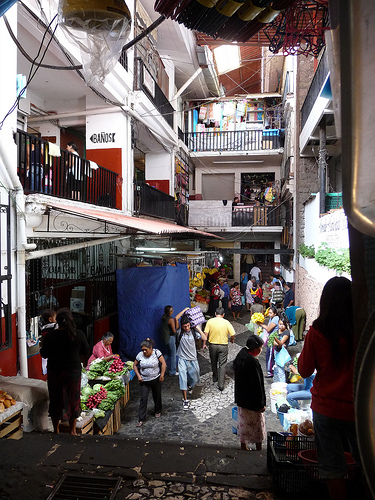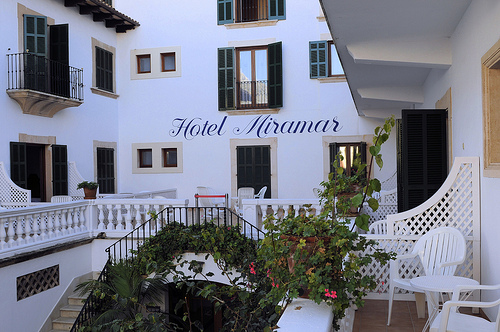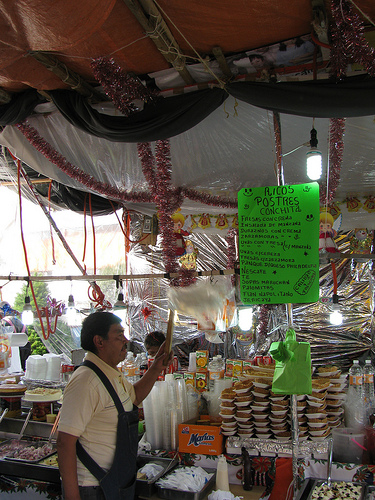The Spanish vocabulary has two words for it, the English has at least three. We are talking about the act of perceiving something with the eyes. Quite often, multiple words can mean the same thing and yet can rarely be swappable; on the other hand, the same word can have different meanings and nothing but context can help one discern the right one! The English verbs, “to watch,” “to look,” or “to see,” have subtle differences and we know that. Coming to Spanish, all those verbs mean must morph into either mirar or ver. So, how does one decide which of the two to use in which context? Actually, it’s easier than you thought!
Ver is what we are talking about here but before we proceed, let’s reinforce something: No two languages can ever be translated word-for-word. Instead of learning the equivalent of “to watch” or “to see” in Spanish, a better approach is to learn and understand the Spanish equivalent of the actions those verbs define. Every language has a nuance and rhythm unique to it and that can never be condensed in any literal translation.
So, the question here is not how one translates, say, “to see” into Spanish. Question is, what Spanish word corresponds to the very action that “to see” represents. Anyways, without much further ado, let’s get back to our ver. This is the Spanish verb that corresponds to the act of seeing something or someone with no deliberation. In English these acts could either be covered by “to see” or by “to watch.” Let’s review some examples:
As these examples illustrate, you obviously use ver whenever you are seeing or watching someone or something. Moreover, ver is also the verb of choice when the seeing is more about meeting someone instead of just seeing. Also, abstract situations where actual “seeing” is not involved also take ver as evident in the last example.
Whenever there’s any bit of deliberation involved, the act of seeing becomes looking and, in Spanish, calls for mirar. This might seem similar to watching or even seeing, but looking is a more intent and focused endeavor. Look at the following examples:
As you see, with mirar, it’s more about gazing or staring than about just seeing or glancing. One might argue that watching a movie should also take a mirar as it involves focus and deliberation but that’s just another rule of the Spanish grammar must be dealt with without expectations of any reasoning.
Another situation where mirar is invoked is when talking about a building’s orientation. The following example should illustrate this without much fuss:
Another common verb used in Spanish for these situations is dar (literally, “to give”). Perhaps the idea is that the building “gives into” whatever lies ahead. The usage is exactly the same as mirar:
So it’s obvious that in this sense, both dar and mirar can be used interchangeably with no problem whatsoever. However, since this article is primarily about mirar and ver, let’s stay on course.
Now we know now that ver is for general seeing but it also covers watching which is actually a rather focused and deliberate act in English. And at the same time, mirar is for intensive gazing or staring but still doesn’t cover the act of watching despite a similarity in their definition.
So where does this leave us? Rather confused and worried about remembering them exceptions and rules, right? Well, what’s the fun in cramming up those rules and getting all mixed up when a recall is desperately needed? There’s got to be some workaround. some shortcut. Some magic spell that could help you remember these rules and their exceptions without any effort of memorization and boost your confidence. Come on, you don’t want to be recalling those grammar rules and translating while having a natural conversation – that’s a huge bottleneck to fluent speech.
Well, the trick is simple. Just remember to use mirar in all cases where the act of watching, seeing, or looking can be replaced by “to look at” in English. Everywhere else, ver is what goes. Forget about all the garbage about focussed viewing and general viewing. Just the following mantra:
It’s that simple! Now coming back to watching movies, since you don’t “look at” a movie, it takes ver:
Vimos una película aburrida anoche. (Last night, we watched a boring movie.)
If you just happened to see an old friend while shopping at the mall, you would use a ver because you just “saw” her, not “looked at” her:
La vi en el mall el fin de semana pasado. (I saw her at the mall last weekend.)
It’s all about whether “look at” sounds more appropriate than anything else. If it does, you know you have a case for mirar. Otherwise, just stick to ver.
The only bit this trick doesn’t cover is, “to face,” when talking about buildings and structures. That one takes mirar (or dar if you will) and you just got to remember that. But it shouldn’t be a hassle if you read enough Spanish anyways. It might help to guess why so many sea-side resorts and hotels are named Miramar all over the world, more so where Spanish is spoken or understood widely. Of course, this has got to do with the fact that the resort or hotel thus named is a sea-facing property and the name is just a means to emphasize that USP!
To see or not to see
 |
| Te vi en la pulga Photo credit: John Hume licensed CC BY 2.0 |
So, the question here is not how one translates, say, “to see” into Spanish. Question is, what Spanish word corresponds to the very action that “to see” represents. Anyways, without much further ado, let’s get back to our ver. This is the Spanish verb that corresponds to the act of seeing something or someone with no deliberation. In English these acts could either be covered by “to see” or by “to watch.” Let’s review some examples:
- Vamos a ver la película. (Let’s go watch a movie.)
- Te vi en la pulga. (I saw you at the flea-market.)
- Vamos a ver qué pasa. (We’re going to see what happens.)
- ¿Quieres ver el partido? (Do you want to watch the game?)
- Voy a ver a mi abuela mañana. (I am going to see my granny tomorrow.)
- Veo lo que quieres decir. (I see what you want to say.)
As these examples illustrate, you obviously use ver whenever you are seeing or watching someone or something. Moreover, ver is also the verb of choice when the seeing is more about meeting someone instead of just seeing. Also, abstract situations where actual “seeing” is not involved also take ver as evident in the last example.
Look at you!
Whenever there’s any bit of deliberation involved, the act of seeing becomes looking and, in Spanish, calls for mirar. This might seem similar to watching or even seeing, but looking is a more intent and focused endeavor. Look at the following examples:
- ¡Mírame! (Look at me!)
- Yo la miraba cada vez que entró. (I looked at her every time she came in.)
As you see, with mirar, it’s more about gazing or staring than about just seeing or glancing. One might argue that watching a movie should also take a mirar as it involves focus and deliberation but that’s just another rule of the Spanish grammar must be dealt with without expectations of any reasoning.
 |
| Este hotel mira/da al mar Photo credit: Ralph Peter Reimann licensed CC BY-SA 2.0 |
- La casa de mi amiga mira a la huerta. (My friend’s house faces the orchard.)
- La entrada de este hotel mira al mar. (This hotel’s entrance faces the sea.)
Another common verb used in Spanish for these situations is dar (literally, “to give”). Perhaps the idea is that the building “gives into” whatever lies ahead. The usage is exactly the same as mirar:
- Las ventanas de su dormitorio dan a las colinas. (Her bedroom windows face the hills.)
- Mi sala da al comedor. (My front room faces the dining room.)
So it’s obvious that in this sense, both dar and mirar can be used interchangeably with no problem whatsoever. However, since this article is primarily about mirar and ver, let’s stay on course.
Time for the trick
Now we know now that ver is for general seeing but it also covers watching which is actually a rather focused and deliberate act in English. And at the same time, mirar is for intensive gazing or staring but still doesn’t cover the act of watching despite a similarity in their definition.
So where does this leave us? Rather confused and worried about remembering them exceptions and rules, right? Well, what’s the fun in cramming up those rules and getting all mixed up when a recall is desperately needed? There’s got to be some workaround. some shortcut. Some magic spell that could help you remember these rules and their exceptions without any effort of memorization and boost your confidence. Come on, you don’t want to be recalling those grammar rules and translating while having a natural conversation – that’s a huge bottleneck to fluent speech.
Well, the trick is simple. Just remember to use mirar in all cases where the act of watching, seeing, or looking can be replaced by “to look at” in English. Everywhere else, ver is what goes. Forget about all the garbage about focussed viewing and general viewing. Just the following mantra:
- Can use “look at” – mirar
- Can’t use “look at” – ver
 |
| Miramar is the Spanish for “sea-facing” Photo credit: Son of Groucho licensed CC BY 2.0 |
Vimos una película aburrida anoche. (Last night, we watched a boring movie.)
If you just happened to see an old friend while shopping at the mall, you would use a ver because you just “saw” her, not “looked at” her:
La vi en el mall el fin de semana pasado. (I saw her at the mall last weekend.)
It’s all about whether “look at” sounds more appropriate than anything else. If it does, you know you have a case for mirar. Otherwise, just stick to ver.
The only bit this trick doesn’t cover is, “to face,” when talking about buildings and structures. That one takes mirar (or dar if you will) and you just got to remember that. But it shouldn’t be a hassle if you read enough Spanish anyways. It might help to guess why so many sea-side resorts and hotels are named Miramar all over the world, more so where Spanish is spoken or understood widely. Of course, this has got to do with the fact that the resort or hotel thus named is a sea-facing property and the name is just a means to emphasize that USP!





















